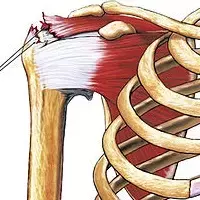- Home
- Medical news & Guidelines
- Anesthesiology
- Cardiology and CTVS
- Critical Care
- Dentistry
- Dermatology
- Diabetes and Endocrinology
- ENT
- Gastroenterology
- Medicine
- Nephrology
- Neurology
- Obstretics-Gynaecology
- Oncology
- Ophthalmology
- Orthopaedics
- Pediatrics-Neonatology
- Psychiatry
- Pulmonology
- Radiology
- Surgery
- Urology
- Laboratory Medicine
- Diet
- Nursing
- Paramedical
- Physiotherapy
- Health news
- Fact Check
- Bone Health Fact Check
- Brain Health Fact Check
- Cancer Related Fact Check
- Child Care Fact Check
- Dental and oral health fact check
- Diabetes and metabolic health fact check
- Diet and Nutrition Fact Check
- Eye and ENT Care Fact Check
- Fitness fact check
- Gut health fact check
- Heart health fact check
- Kidney health fact check
- Medical education fact check
- Men's health fact check
- Respiratory fact check
- Skin and hair care fact check
- Vaccine and Immunization fact check
- Women's health fact check
- AYUSH
- State News
- Andaman and Nicobar Islands
- Andhra Pradesh
- Arunachal Pradesh
- Assam
- Bihar
- Chandigarh
- Chattisgarh
- Dadra and Nagar Haveli
- Daman and Diu
- Delhi
- Goa
- Gujarat
- Haryana
- Himachal Pradesh
- Jammu & Kashmir
- Jharkhand
- Karnataka
- Kerala
- Ladakh
- Lakshadweep
- Madhya Pradesh
- Maharashtra
- Manipur
- Meghalaya
- Mizoram
- Nagaland
- Odisha
- Puducherry
- Punjab
- Rajasthan
- Sikkim
- Tamil Nadu
- Telangana
- Tripura
- Uttar Pradesh
- Uttrakhand
- West Bengal
- Medical Education
- Industry
Innovative Device Inspired by Python Teeth Enhances Rotator Cuff Repairs, reveals research

Researchers have found that a novel device inspired by the unique structure of python teeth significantly enhances the strength of rotator cuff repairs. A research team from Columbia University, led by Stavros Thomopoulos, PhD, came to this conclusion while seeking to improve post-operative outcomes for patients undergoing common orthopedic surgery. The study was published in the journal Science Advances.
Rotator cuff tears are among the most prevalent orthopedic injuries, affecting approximately 40% of Americans over 65 years old. With around 600,000 repair surgeries performed annually in the U.S., current techniques, which primarily rely on sutures to reattach tendons to shoulder bones, often fail. The sutures can slice through tendons over time, especially where stress is highest, leading to failure rates ranging from 20% in younger patients to a staggering 94% in elderly patients with severe tears. The “cheesewiring effect,” wherein sutures cut through tendons, significantly contributes to these high failure rates.
The inward-curving teeth of pythons, which prevent prey from escaping without tearing flesh, Thomopoulos and colleagues developed a 3D-printed device to improve tendon-bone attachment. The device is composed of small biocompatible plastic rectangles studded with curved teeth, optimized through experimentation with different curvature ratios, tooth arrangements, and spacing.
The researchers conducted trials using five paired shoulder joints from human cadavers. They simulated rotator cuff tears and performed conventional double-row suture repairs on some, while others were repaired using the python-tooth device. The devices, measuring 15.5-17.5 mm by 6-8 mm and carrying 13 teeth each about 3 mm high, were tested for their ability to withstand strain.
Repairs incorporating the python-tooth device exhibited an average increase in maximum force (strength) of 83% compared to conventional suture repairs.
The optimal tooth curvature ratio was found to be 2.5, which prevented cutting while effectively grasping bovine tendon samples.
The customizability of 3D printing allows for patient-specific designs, enhancing the fit and effectiveness of the device.
The significant improvement in repair strength suggests that this device could dramatically reduce the high rerupture rates currently observed in rotator cuff surgeries. The python-tooth device's ability to gently yet firmly grasp tendons addresses the mechanical failures associated with traditional suturing techniques.
This innovative approach, holds great potential for improving the durability and success of rotator cuff repairs. By nearly doubling the repair strength, the python-tooth device could significantly enhance postoperative outcomes and reduce the high rates of rerupture seen with current techniques.
Reference:
Kurtaliaj, I., Hoppe, E. D., Huang, Y., Ju, D., Sandler, J. A., Yoon, D., Smith, L. J., Betancur, S. T., Effiong, L., Gardner, T., Tedesco, L., Desai, S., Birman, V., Levine, W. N., Genin, G. M., & Thomopoulos, S. (2024). Python tooth–inspired fixation device for enhanced rotator cuff repair. Science Advances, 10(26). https://doi.org/10.1126/sciadv.adl5270
Dr Riya Dave has completed dentistry from Gujarat University in 2022. She is a dentist and accomplished medical and scientific writer known for her commitment to bridging the gap between clinical expertise and accessible healthcare information. She has been actively involved in writing blogs related to health and wellness.
Dr Kamal Kant Kohli-MBBS, DTCD- a chest specialist with more than 30 years of practice and a flair for writing clinical articles, Dr Kamal Kant Kohli joined Medical Dialogues as a Chief Editor of Medical News. Besides writing articles, as an editor, he proofreads and verifies all the medical content published on Medical Dialogues including those coming from journals, studies,medical conferences,guidelines etc. Email: drkohli@medicaldialogues.in. Contact no. 011-43720751


